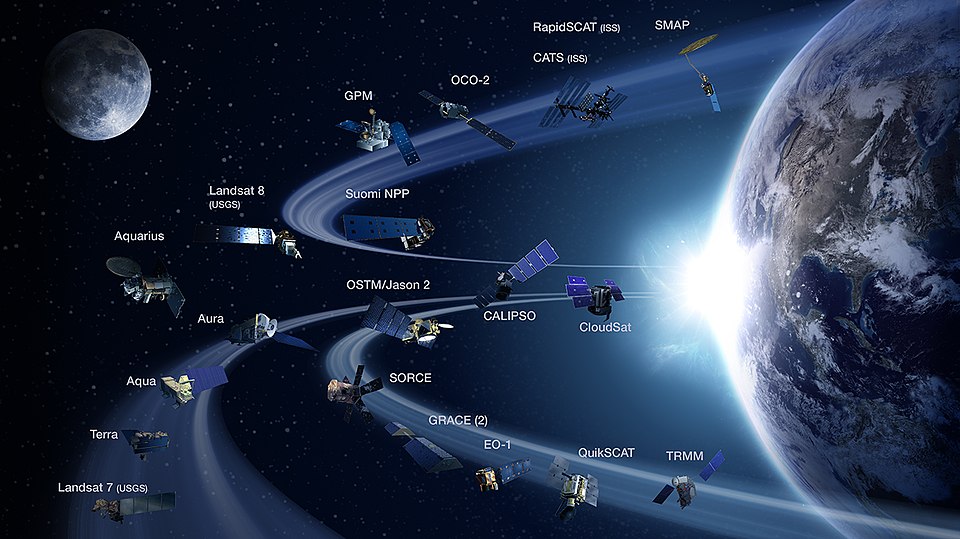When we picture space, we usually think of stars, planets, and the moon. But floating quietly above our heads are thousands of machines that play a major role in our daily lives. These machines are called sattelitters. Whether it’s guiding our GPS or delivering weather reports, sattelitters are constantly working behind the scenes.
But not all sattelitters are the same. There are several types, each with its own mission. In this article, we’ll explore the main types of sattelitters floating in space and how they help us.
What Are Sattelitters?
Sattelitters are human-made objects launched into space to orbit the Earth or other planets. Each one has a different job—some transmit signals, others capture images, and many gather valuable data.
These sattelitters move in different orbits based on the task they are designed to perform. Some stay close to Earth, while others orbit much farther away.
Let’s explore the main types of sattelitters and what sets each one apart.
1. Communication Sattelitters
Communication sattelitters are used to send and receive signals across long distances. They allow us to make phone calls, watch satellite TV, and connect to the internet in remote areas.
These sattelitters are usually placed in geostationary orbit, which means they stay in one fixed position over Earth. This helps provide a stable signal for a specific region.
Without communication sattelitters, we wouldn’t be able to enjoy global broadcasts or video calls with people far away.
2. Weather Sattelitters
Weather sattelitters help scientists track weather conditions across the globe. They monitor storms, cloud patterns, wind speed, and sea temperatures.
By sending real-time images and data, weather sattelitters allow meteorologists to predict rain, heatwaves, hurricanes, and other natural events. This helps keep people informed and safe.
Some weather sattelitters also study long-term climate changes, which is important for understanding global warming.
3. Navigation Sattelitters
Have you ever used GPS to find directions? If yes, then you’ve already used navigation sattelitters.
These sattelitters operate as part of systems like the Global Positioning System (GPS). They help determine your exact location, speed, and direction, no matter where you are on Earth.
Navigation sattelitters are used not only in cars and phones but also in airplanes, ships, and military vehicles.
4. Earth Observation Sattelitters
Earth observation sattelitters are designed to keep an eye on our planet. They capture detailed images of land, water, forests, cities, and even natural disasters.
Governments and scientists use these sattelitters to study deforestation, pollution, crop health, and more. They are also helpful in managing disasters like floods, wildfires, and earthquakes.
These sattelitters provide valuable information for environmental protection and sustainable development.
5. Scientific Sattelitters
Scientific sattelitters are designed for exploring space and conducting research beyond Earth. Rather than observing our planet, they focus on stars, planets, galaxies, and other parts of the universe. A well-known example is the Hubble Space Telescope, which has captured breathtaking images from deep space. Scientific sattelitters help researchers understand how the universe works and discover new cosmic events.
They play a big role in expanding human knowledge about space.
6. Military Sattelitters
Military sattelitters are used by governments for defense and security purposes. These sattelitters can track movements on Earth, guide missiles, or provide secure communication channels.
Most military sattelitters operate in secrecy, but they are essential for national safety and intelligence gathering.
They ensure that defense systems remain aware and responsive to global threats.
7. Space Exploration Sattelitters
These sattelitters are made to explore planets, moons, and asteroids beyond Earth. They collect information from faraway places and send it back to scientists.
Examples include the Mars Reconnaissance Orbiter and other probes studying the solar system. Space exploration sattelitters help us prepare for future missions to other planets.
They open the door to discovering new life, water sources, and even possibilities of human life beyond Earth.
Why Sattelitters Matter
Sattelitters are a vital part of modern life. We rely on them for many things, even if we don’t realize it:
- Communicating through phones and the internet
- Watching weather reports and tracking storms
- Finding locations with GPS
- Studying our environment and climate
- Exploring space and protecting national security
Without sattelitters, our world would be slower, less informed, and more disconnected.
Conclusion
There are many different kinds of sattelitters floating in space, each with its own role. Some help us talk to each other, while others study the Earth or even explore distant planets. Every sattelitter has a specific mission that helps improve life on Earth.
So the next time you check your weather app or use GPS, remember—there’s a sattelitter high above you, quietly doing its job.
Note: For More Interesting Content Check Our Other Baddiehub Blogs.



